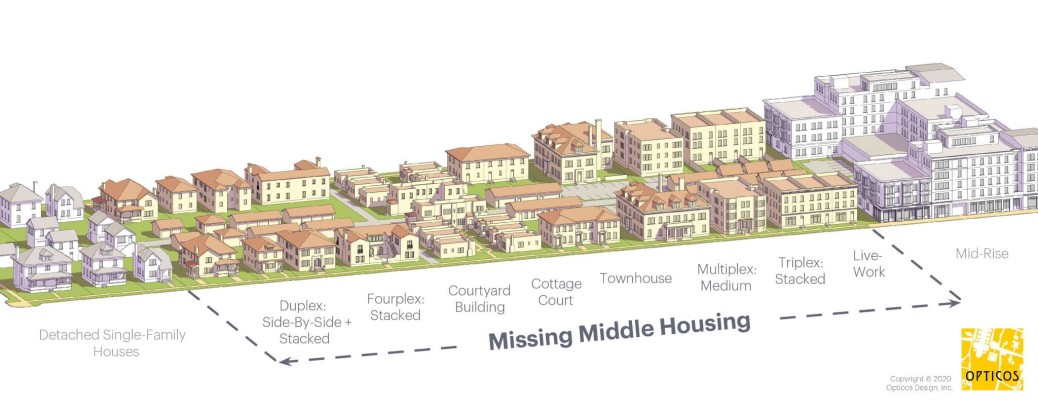The Missing Middle
A key strategy to increasing housing diversity is to support missing middle housing forms. Missing middle housing is an urban planning concept which focuses on the gap in housing between single family dwellings and apartment buildings.
What is Missing Middle?
Missing Middle is a range of multi-unit or clustered housing types compatible in scale with single-family homes that help meet the growing demand for walkable urban living. Missing middle housing types include: duplexes, triplexes, fourplexes, multiplexes, townhouses, row housing, cottage clusters and courtyards apartments. These building types provide diverse housing options and support locally-serving retail and public transportation options. We call them “Missing” because they have typically been illegal to build in many areas due to zoning regulations and “Middle” because they sit in the middle of a spectrum between detached single-family homes and mid-rise to high-rise apartment buildings, in terms of form and scale, as well as number of units and often, affordability. In the diagram below, the Missing Middle types are shown in yellow, providing many housing options in between the single-family homes and higher intensity apartment buildings, both shown in white.
While many of these forms are “missing” from our current building stock, these types of buildings from the 1920s and 30s are beloved by many who have lived in them. Today the elderly, young couples, teachers, single, professional women and baby boomers are among those looking for ways to live in a walkable neighborhood, but without the cost and maintenance burden of a detached single-family home. Missing Middle Housing helps solve the mismatch between the available urban housing stock and shifting demographics combined with the growing demand for walkability.
Affordability
In terms of affordability, we tend to think of a dichotomy between single-family detached homes and apartments and townhouses, and people quickly become concerned about increasing density affecting neighborhood character. One way many communities in North America are increasing density while maintaining a streetscape that is compatible with single-family housing types is to incorporate the concept of “missing middle” housing types.
Missing middle housing can assist in both increasing the number of units built and providing units for a wide variety of price points. This involves allowing a broader diversity of housing types than most zoning bylaws allow today, but that used to be built in many communities historically. Opticos Founder Dan Parolek coined the phrase “missing middle” housing to describe a range of multi-unit or clustered housing types. (See http://opticosdesign.com/(External link) and http://missingmiddlehousing.com/ (External link)for more information).
Because land costs and home size often limit affordability, a classic solution is to aim for greater density and/or smaller lots and/or smaller homes. Missing middle housing types provide more units on less land than traditional single-family homes.
Missing Middle Housing Types
The Missing Middle Housing types provide diverse housing options, such as duplexes, fourplexes, and multiplexes. These house-scale buildings fit seamlessly into existing residential neighborhoods and support walkability, locally-serving retail, and public transportation options. They provide solutions along a spectrum of affordability to address the mismatch between the available housing stock and shifting demographics combined with the growing demand for walkability.
The majority of Missing Middle Housing types have 4-8 units in a building, or 4-8 units on a lot in the case of a cottage cluster. Most Missing Middle building types are 2 to 2.5 stories in height, with the exception of the cottage cluster at 1.5 stories.
Small Lot Single Family
A single family dwelling (house) built on of a parcel of land that is smaller in size than a typical single family homes. In Squamish, small lot single family zoning has a minimum parcel size that is 1/3 of the typical single family zone and a minimum width that is half the typical single family zone.
Some examples of areas in Squamish with this type of housing include Hospital Hill and Amblepath.
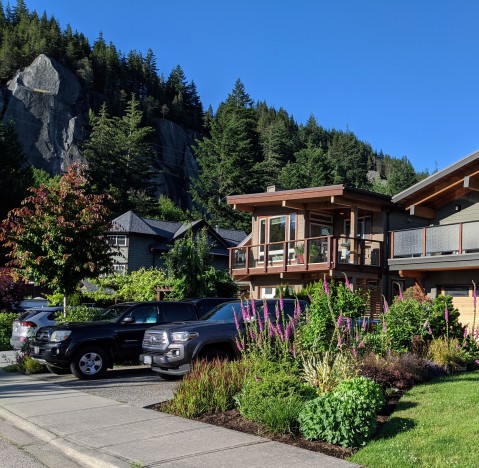
Duplex
A building which must meet the same size restrictions as a single family dwelling but which contains two separate dwelling units. The dwelling units are often placed side-by-side with a common wall; however, they can also be built front-to-back or stacked vertically, which can enable them to fit on narrower lots. Duplexes may include a backyard and a garage for each unit. Duplexes can be built to have the appearance of single unit dwellings.
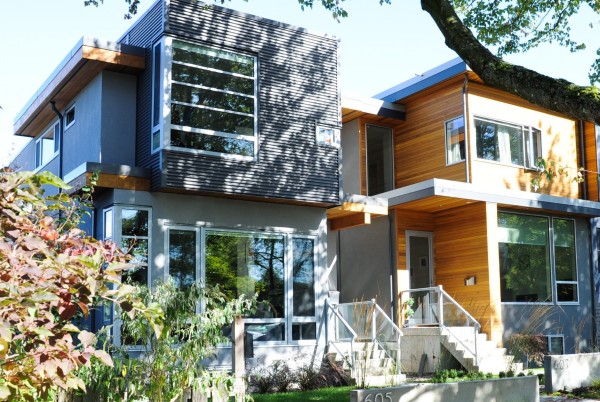
Triplex
A building which must meet the same size restrictions as a single family home but which contains three dwelling units. The dwelling units can be located side-by-side or may have elements stacked on top of each other. Side-by-side units each typically have ground floor entry; stacked units can have a mix of ground floor entry and shared entries for stacked units. Triplexes may include a rear yard and garages for each unit.
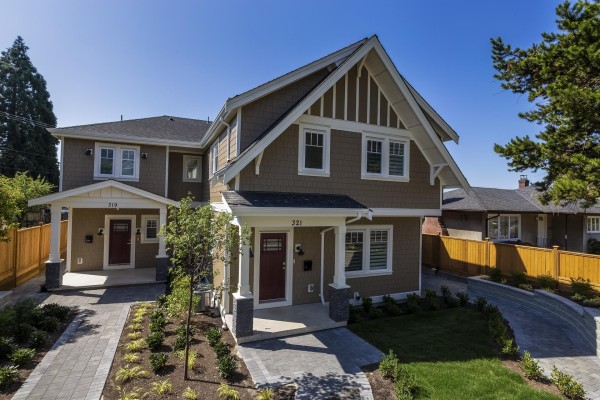
Fourplex
A 2-3 story building with four dwelling units, typically arranged with two units on the ground floor and two units above, with shared or individual entries from the street. This housing type can have the appearance of a large-sized single-unit house and may include a rear yard. Depending on the size of the lot, a mix of garages and an outdoor off-street area may be used for parking.
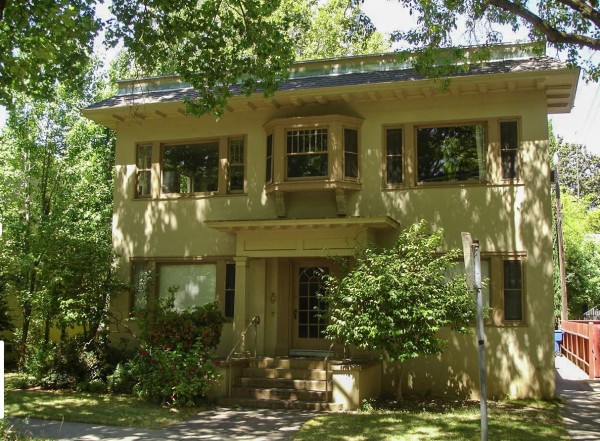
Multiplex
A 2 to 3-story building containing between 5 and 12 dwelling units arranged side-by-side and/or stacked, typically with a shared entry from the street. This type can range in appearance from a large single-unit dwelling to a small townhouse and may or not include a backyard. Depending on the size of the lot, a mix of garages and an outdoor off-street area may be used for parking.

Cottage Cluster
A group of small, 1- to 1.5-story buildings arranged around a shared courtyard visible from the street. The shared courtyard is an important community-enhancing element and unit entrances generally lead to the courtyard which replaces the function of a backyard. In some examples building can be up to 2 stories. Cottage clusters typically feature outdoor parking rather than garages.
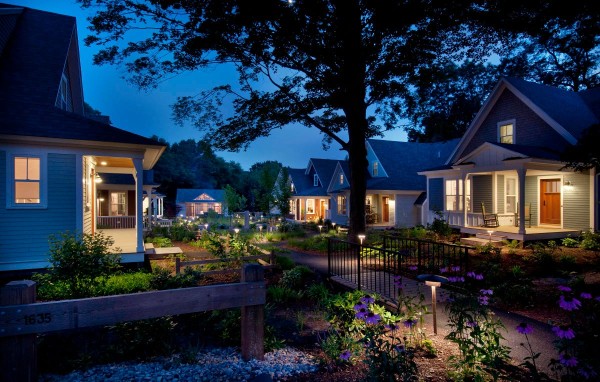
Courtyard Apartment
A medium sized, 2- to 3.5-story building consisting of multiple side-by-side and/or stacked dwelling units oriented around a courtyard or series of courtyards. The courtyard replaces the function of a rear yard and is generally open to the street in residential neighborhoods and less open to the street in more urban settings. Each unit is accessed from the courtyard and shared stairs may provide access up to multiple units. Depending on lot size, a mix of garages and outdoor off-street parking may be utilized.
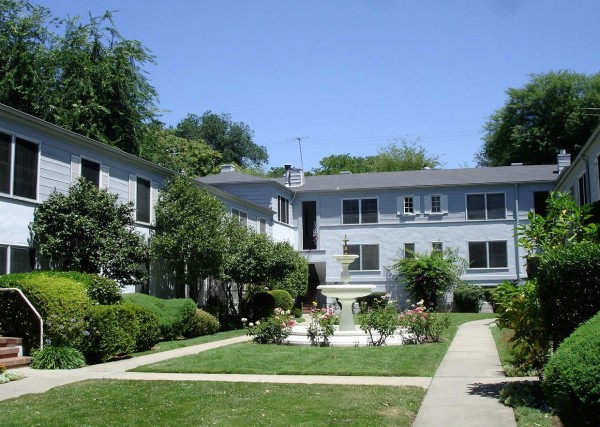
Townhouse
A series or cluster of two or more individual dwelling units, attached either vertically or horizontally, where individual access to each unit is from the finished grade of the lot. Entries often face a street or shared outdoor space, which is a requirement. Garages are often located on the ground level with living space located on the second and third story.
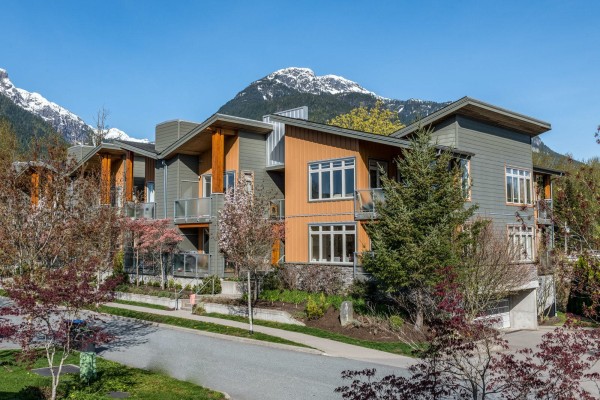
Fee-Simple Row House
A townhouse style of development with a specific difference in the ownership structure. In a fee-simple row house, there is nothing that is owned by a condo association. The owners own their building and the land under and around their townhouse. Owners of neighbouring units enter a party wall agreement which outlines responsibilities concerning shared walls. Fee-simple row house are different from most existing townhouses in BC where the purchasers are members of a condo association; while these owners own most of their unit outright, the exterior walls, grounds, parking and driveways are owned in common. Consequently, row homes are attractive to buyers who want the ownership autonomy typically associated with single family dwellings at lower price.
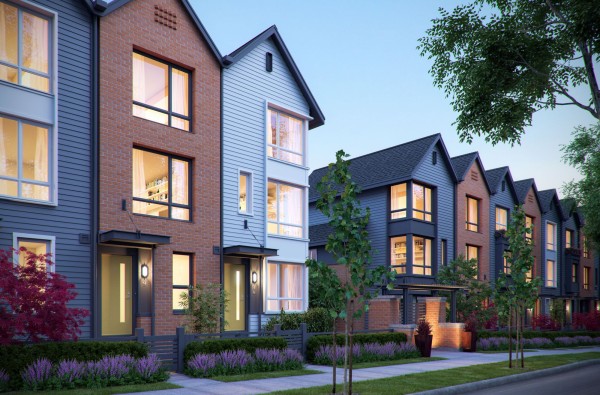
Low-Rise Apartment
A medium sized, 3-4 story building consisting of apartments, generally accessed from an inner lobby and hallway system. Shared outdoor space must be incorporated into the design. Parking may be locate in a ground floor or underground garage, or in an outdoor parking lot.
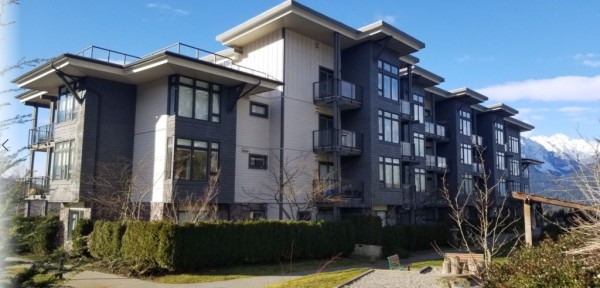
Mixed Use Apartment
A medium-sized, 3-5-story building consisting of dwelling units above a ground floor space that can accommodate a range of commercial use. The commercial space and residential units typically have separate street entrances. The commercial space typically has a taller ceiling height (min. 10’) and a design appropriate for retail business. Shared outdoor space must be incorporated into the design. Parking may be locate in a ground floor or underground garage, or in an outdoor parking lot.
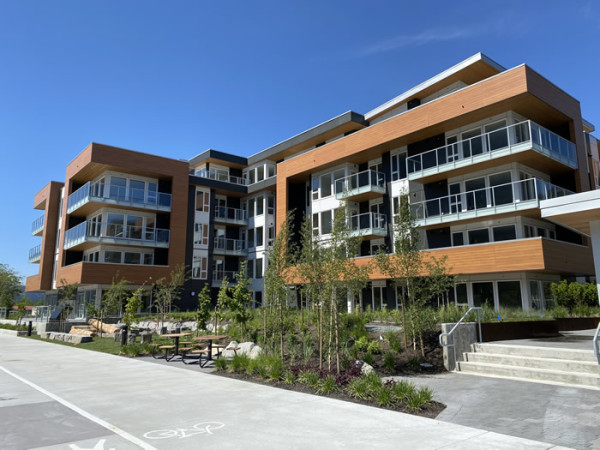
Missing Middle and the Vancouver Context
The missing middle phenomenon is common across North America, including the Metro Vancouver area which primarily has two types of housing: high rises or the single family house. This video delves into the history of Vancouver zoning, provides an explanation of how the city wound up with the current housing structure, and outlines how increased housing choices can benefit community residents.
June 2, 2022

